
November 2005
January 2007
August 2007
September 2008
2018 Update
CPT 9000 News
CPT 4200 News
May 2025
Over to John:
"CPT was founded by Dean Scheff, not Dick Eichorn. Dean started the company in 1971, and the original product was a cassette tape base memory add-on for IBM Selectric typewriters (The name CPT originally meant Cassette Power Typing).
As you already know, the CPT 8000 series (8000, 8100, et al) was a dedicated word processor. The beauty was in it's 14" portrait oriented screen. This screen was white with black characters and had a very high scan rate (for the day). The 8000 perfectly mimicked a sheet of paper being scrolled through an electric typewriter and was therefore very comfortable for most office workers to use.
CPT had other products like the 6000 (a low powered, half screen version of the 8000), the Diskpack (sp? I don't remember how we spelled that shared disk system, the Phoenix (word processing with graphics) and the 9000 series (a low profile replacement for the 8000 series that utilized the Intel 8086 processor."
CPT was started by Dean Scheff and Jim Weinhold. *And John Williams was the jack of all trades. Another early employee was Jim Lauman. Jim Weinhold designed the first machine which was the Cassette Powered Typewriter 4100. Gobs of TTL! This was the bare mechanicals from an IBM selectric wired to a device (he designed) that let you record what was typed, You entered corrections then "played" the tape back for a corrected copy. CPT was #3 in the computer biz and a fortune 100 company. They had buildings in Hopkins, Eden Prarie and Chanhassen MN.
8080 based Computer Wordprocessors included the CPT 8000 (64 K of Ram) 8100 (128K and more) 6000 (A half page height version) and other variations. The machines "OS" was multitasking and fully interrupt driven. Very speedy even if judged by todays standards. They had Hard Disk (Word Pack) Servers SRS45, and all sorts of advanced stuff well before the IBM PC and Apple Macintosh. When we worked as grunts we ran CP/M on it. I started working as a technician in the old Hopkins Barn in the early days fixing the 8000 and 6000 series. I later moved over to the Secret R&D plant at the White Motor Building and worked on the Multiprocessor for the Multibus based Phoenix Computer with Fred Lehman. This was a true Multiprocessor that featured an 8085 and a 8086, 512K of Error Correcting Memory. The machine (The Phoenix) had an internal Hard Disc, Dual 8 inch and optional 5 1/4 (or 3 1/2) drives. A graphics controller that was designed to move text around. It was WAY ahead of it's time. Unfortunatly the better mousetrap didn't have the marketing hype of the almost beyond crap IBM pc which I investigated and said was "junk." The Apple Macintosh was also reviewed and I couldn't imagine anyone buying it either vrs our world beaters. Unfortunatly the software for the Phoenix never made it up anywhere near the level of the hardware design. In fact I recall at least one "major" program being "HALT86" which shut of one the processors so the crude port of the 8000 code could run un-encumbered by the other processor.
Dean Scheff went on to start a company called Image Systems (Which I was project Director of!) which made very large (24 Inch) dual page monitors as well as one of the first high speed color screen.
I think I have the ony Phoenix Computer System let. I also own the Intellec8 (8080) which was used to develope early code for the 8000 series. I offered to buy it at a company auction but was turned down. I later found it on the hood of my car. *It was going to be thrown away and (I think) John W. decided I would give it a better home than the trash dumpster.
He says "We also had an item called the SRS-45, an external hard drive that up to 8 workstations could share. It came standard with a 30 meg drive, with options for an additional 30 meg drive and\or a 10 meg removable cartridge drive."
"The Phoenix did eventually ship and was quite popular, but a support nightmare. They never really did get all of the bugs worked out of it and it was one of the anchors that drug the company to the bottom"
"I wish that I could find some information on the CPT 9000. It had an Intel 8086 processor and the option of a split video screen, that could be run either in full screen word processing mode (like the 8000\8500 series) or the bottom 1/2 could be used for word processing and the top could be used to run MS-DOS with a Hercules black and white video display with graphics. It was pretty cool. The 8500 series also had a split screen option, where the top 1/2 would serve as a VT100 terminal emulator."
I wanted to give you some information on the CPT 9000. I worked on all the 8000 and Phoenix Jr. series. The 8000's were tough to keep repaired. We did board level maintenance. So, we carried spare boards wherever we went. If a customer had a problem, we swapped boards until it worked. Then, we retested the boards at the shop to verify a problem. Most of the time, the returned boards were re-certified by our own standards. Some boards seemed to be picky about what machine they were in, yet would work flawlessly on others. Any boards that failed our testing would get shipped to a third party repair center for component level maintenance (I forget the name of the shop). Then the cycle would continue.
As for the Phoenix Jr., they were a bit more resilient. They didn't fail very often, but we would replace a lot of keyboards. Occasionally, the disk drives would fail for the client, but mainly they're just dirty. All around, the Phoenix Jr. was a robust word processing system.
The 9000 series was Intel based and were mostly IBM compatible. The actual systems were contained on a large combo board ISA card that was plugged into a bus system. The whole CPT system was in the card. It also sported IBM compatibility. I'm not sure if it was fully AT compatible, but I believe it was because we got Windows 3.1 to work on it for some clients. The split display between CPT and DOS/Windows was nifty at the time. You could even go full screen on Windows with the right drivers. One of our clients was crossing over from CPT to desktop publishing. They would run Venture Publisher, full screen, on the 9000 and switch to CPT when needed. Most of the 9000 series sported 20-40MB hard drives. CPT documents could be exported to HD and then re-imported into Ventura, or even Word Perfect (which we also had running on the DOS side).
Recently, I've been in contact with the two brothers that were the original designers of the CPT word processors. Clarence Lehman wrote the software and Fred Lehman designed the hardware. Clarence lives in Minnesota and was contacted by the Babbage Computer Institute about CPT's role in the history of computing. Babbage wanted a CPT computer and the software for a section they're preparing.
Since none of us have a CPT machine anymore, and have been unable to find one, Clarence decided to write an emulator for the CPT program, that runs on today's PCs. I just got off the phone with Fred and he said Clarence has completed the emulation and it exactly mimics the CPT word processing program. I can't wait to see it.
Anyway, that got me to thinking about Binary Dinosaurs and how you have a CPT 85xx computer. I told Fred to tell Clarence that maybe he should contact you. So I'm going to send your e-mail address to Clarence, via Fred, and maybe he will.
By the way, the CPT 85xx you have pictured is a very early model. It has the Tandem 8" drives. These were replaced with NEC drives very early in the production run, because the Tandem drives were so bad. The board the drives plug into (mounted above them) was designed by me. It's a state-machine board, with a decoder prom, that changes the old (Shugart) 3-phase stepper motor output of the disk controller board into step and direction signals that the (at the time) newer floppy drives required. I still have the wire-wrapped original in a box somewhere.
Well, I hope this e-mail finds you and that Clarence or Fred contact you too. Because if you really, really, want to know everything about CPT those are the two guys who actually invented the stuff.
I still have all my service documents and diskettes from CPT but they are stacked in boxes in storage and pretty difficult to get to. I'm not sure if my 8135 will still boot anymore because I haven't had it up in almost 10 years. The 8135 was the top of the line for the 81xx series in the States. I am unfamiliar with the 8150 designation so it must be the corresponding UK version equipped for 50Hz. In 1986 the company came out with the 9000 series word processor which was basically a monitor, a keyboard and a custom adapter card (a bridge board) that would convert a standard PC (up to 20 MHz) into the equivalent of a 81xx system. CPT was relatively successful in selling these to their older customers but not so much to new prospects who much preferred a PC to run Word or WordPerfect (ugh). I have been unable to find a 9000 surviving anywhere.
You're right, the CPT 8100 and 8500 series were very advanced for their time. They could multi-task while all the competetors' could only perform one task at a time. Changing tasks basically required a software reload. Can you imagine in the middle of editing a document you have to save your work, insert the program disk and load a separate task just to list the contents of your diskette, then reload your editing task to get back to your document? That was the IBM Displaywriter philosophy. Horrible machine. With the CPT you could boot up then put your program disk away for the rest of the day. I have personally seen an 8135 printing a control-page job to a laser printer (with repagination, headers, footers, references, etc.), printing a second document to a Qume daisy-wheel printer, reading and storing text from an optical scanner and all the while keeping up with a transcription operator.
The CPT system was said to be written in a proprietary language called MOL. Machine Operating Language was a somewhat cryptic version of assembly language but it evidently allowed the programmers to write some tight code. All numbers in MOL were coded in decimal rather than hex or octal because I have come across bits of their code that were left on the occasional disk. It is hard to imagine nowdays but when CPT first designed the 8000 ca. 1977 they used the 8000 to compile and link its own OS. A special 8000 system in the Engineering department was built out with eight floppy drives which would be loaded up with a debugger, compiler, a linker, source disks, a scratch disk, and a blank disk in its eight floppy drives. A compile/link session reportedly took four to five days to complete. When I visited CPT in Minneapolis around 1986 they had progressed to a Sperry mainframe to develop and cross-compile their software.
What does your system do when you insert a program disk? It is not completely clear from your description if it boots then won't read your work floppies or if it just isn't booting. If it is the former then you either have unformatted diskettes or improperly formatted diskettes and will need to format them before they can be used. Make sure that your disks aren't double-density or hard-sectored because those won't work in a single-density drive. You could probably use DD diskettes if you punch another hole in them... I've never tried. I can send you a program to format your disks based on whether or not my machine still lives.
If your problem is a boot problem then read on.
Watch the head move when the machine is booting. Run the stepper screw in manually with the power turned off and see if the drive will seek TK0 when you pwr up and insert a boot disk. Try to boot from both drives. They should exhibit the same behavior. A drive should initialize out to track 0 then step in to TK1 and read Sec0 (the boot sector) when you insert a disk. If it finds a bootable disk then the drive will load software off the first 15-20 tracks. If the disk isn't recognized as bootable or if it is defective the system will unload the head and reinitialize and try again. This whole cycle repeats about 2-3 times/second. If this is what is happening then I would suspect the disk, the disk controller cable or the controller card.
Even if the drive steps in and out ok the 1771 disk controller chip can still be toast. CPT didn't utilize the stepping functions that are available in the 1771 for some reason but chose instead to drive the stepper motor directly through software. The only thing that the controller chip does in this machine is encode and decode the data stream to and from the R/W head, and sense when the drive is on track 0.
If the red parity light on the CPU board comes on when you insert your disk it could indicate low voltages on either one of the 12v supplies or the 5 volt supply, or from ripple on one of the supplies. It can also be caused by bad cables. I would recommend you set the 5v supply to exactly 5.1v as measured at the disk controller test pads. Set the two 12v supplies to exactly 12v. Set the 24v to exactly 24v. Make sure the R/W heads are clean and the load pads (Tandon) aren't completely gone. Clean the card-edge connectors with a non-abrasive eraser and re-seat all the boards and cables.
If you require, I might be able to build a new boot disk or create you a format utility disk but only if my system can be resuscitated and my software configurator still works.
For some time I have wanted to interface an 8" floppy drive to a PC so I can archive all my CPT diskettes onto DVD. I probably need to do that very soon before everything is lost forever. And then there is my old Mark-8 that I need to restore..... Maybe someday.
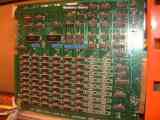 | 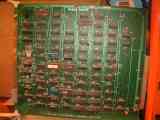 | ||
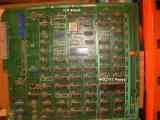 |  |  |
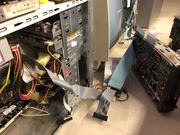 |  | 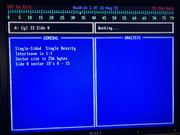 |  |
 | 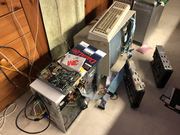 |  |  |
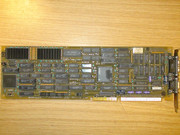 |  | 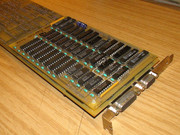 |  |
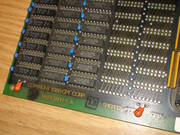 | 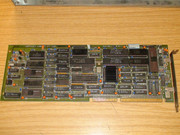 | 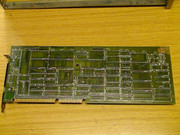 |  |
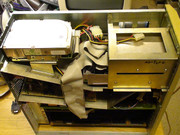 | 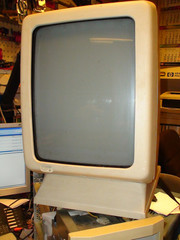 |  |  |
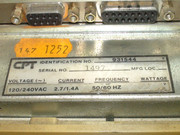 | 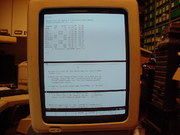 | 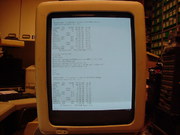 |  |
 | 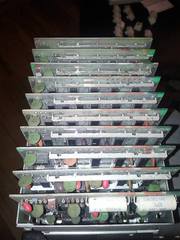 |  |  |
 | 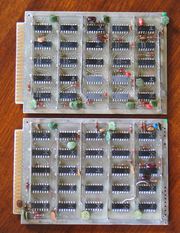 | 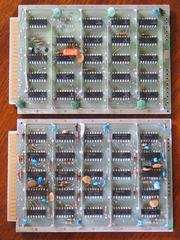 |  |
It booted!
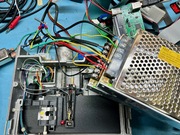 |  | 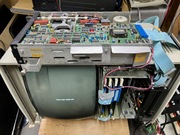 |  |
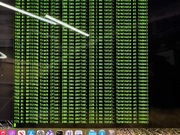 | 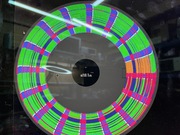 |  | 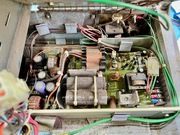 |
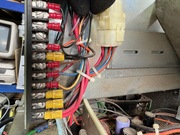 | 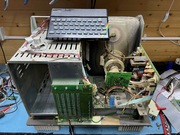 | 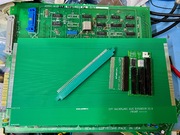 | 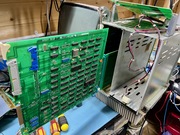 |
 | 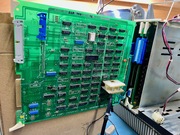 | 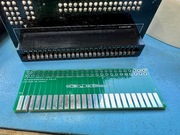 | 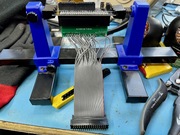 |
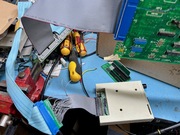 | 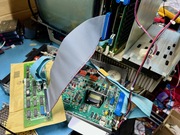 | 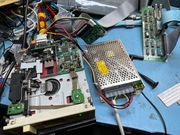 | 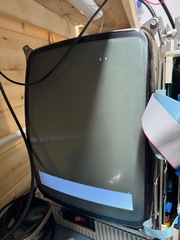 |
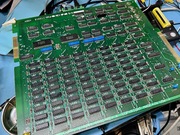 |  |  |  |
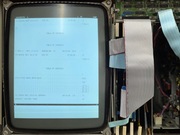 | 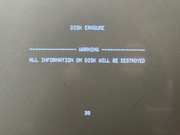 |  |  |
 |  | 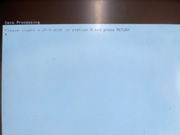 | 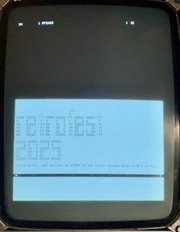 |
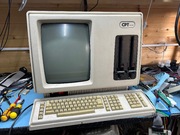 | 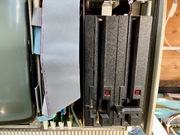 |  |  |
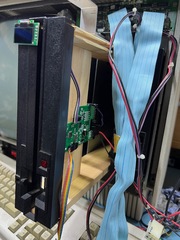 |  |  |  |
Brochure for the CPT 8500
Overhead shot of the CPQ HQ
Page on the CPT Phoenix
CPT Shared disk unit